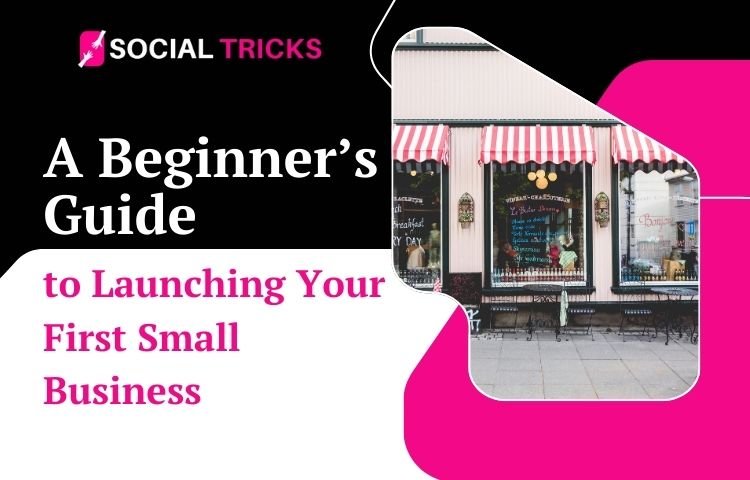Finally, initiating a small business is a very exhilarating voyage yet the thought also sends some shudders down the person because it is not simple and straightforward all the time. However, one can transform the best ideas into business success through thorough planning, research, and dedication. This guide walks an individual on how to go through the critical steps of establishing the very first small business in a simplified manner.
1. Knowing Your Business Idea
Having a good idea is a prerequisite for starting a business. Ask yourself:
- Which product or service am I going to offer?
- Who my customers will be?
- What problem am I solving?
Market Research
It is a research that will help you know about demand, competition, and pricing.
- Surveys – Ask people if they buy your product.
- Competitor Analyse – Study successful businesses in the field.
- Online Research – Check market demand using Google Trends and social media.
Stat: According to the Small Business Administration (SBA), around 20 percent of new businesses fail during the first year because of poor market research.
2. Writing a Business Plan
In fact, a business plan serves as a guide for a business. It should include the following components:
- Type of Business Name– Choose a name that is catchy but easy to remember.
- Mission Statement– A sentence or two on what your business is all about.
- Target Audience – Identify who will buy your product/service.
- Revenue Model – How your business is making money.
- Marketing Strategy – How will you entice your customers?
- Start-up Costs – Indicative budget for launching.
Fact: Businesses with a clear business plan are 30% more likely to succeed.
3. Legal Requirements & Business Registration
For a business to run legally, there are certain registrations that it has to go through.
Steps on How to Register Your Business
1. Choose a Business Structure
- Sole Proprietorship (Easy to start, but comes with personal liability in case of debts).
- LLC (Limited Liability Company – Protects one’s personal assets).
- Corporation (Best suited for big businesses but face more paperwork involved).
2. Obtain an EIN (Employer Identification Number)
- No business can run without this requirement as it is for tax purposes.
3. Register for Taxes and Licenses
- Sales tax (If selling products).
- Business licenses for your locality.
Stat: In the United States, more than 80 percent of small businesses are sole proprietorships.
4. Setting Up Business Finances
Open a Business Bank Account
- Denotes separation between personal and business funds.
- Helps track income and expenses.
Funding Your Business
- Personal Savings – Most common source of finance.
- Small Business Loans – Available from banks or the SBA.
- Investors – Seek funds from friends, families, or venture capitalists.
- Grants – Free money from the government or private organizations.
Fact: 29% of small businesses fail due to lack of sufficient capital.
5. Branding & Marketing Strategy
Creating a Strong Brand
- Logo and Business Name – Must be different and remember it easier.
- Brand Colors & Fonts – Give identity.
- Website and Social Media – Inritical for online presence.
Marketing Your Business
- Social Media Marketing – Using Facebook, Instagram, LinkedIn.
- Content Marketing – Blogging, YouTube videos.
- Email Marketing – Sending offers and updates.
- SEO (Search Engine Optimization) – Helps your website be visible in Google search.
Stat: Over 60% of small businesses do marketing activities on social media.
6. Setting Up Operations & Hiring Employees
Organizing Your Workflow
- Use tools like Trello, Slack or Google Drive to manage the task.
- Record keeping of inventories, sells and expenses.
Hiring Employees (If Needed)
- Just post jobs in websites like Indeed or LinkedIn.
- Pay competitive salary and set a good working environment.
- Train employees properly.
Fact: Small businesses form 64 percent of new jobs every year in the US.
7. Customer Care and Business Growth
What will be great service?
- Replies fast for queries
- Gives quality products and services
- Gathers customer feedback and improves
Expanding Your Business
- Expand products line
- Open Branches
- Link Other Business
Fact: 86% of customers are willing to pay more for great customer service.
Final Words
Launching your very first small business takes time and effort, but quite rightly planned and determined, it can just become your successful startup. Start small; keep learning and adapting. Every successful business was once only an idea, just like yours!


